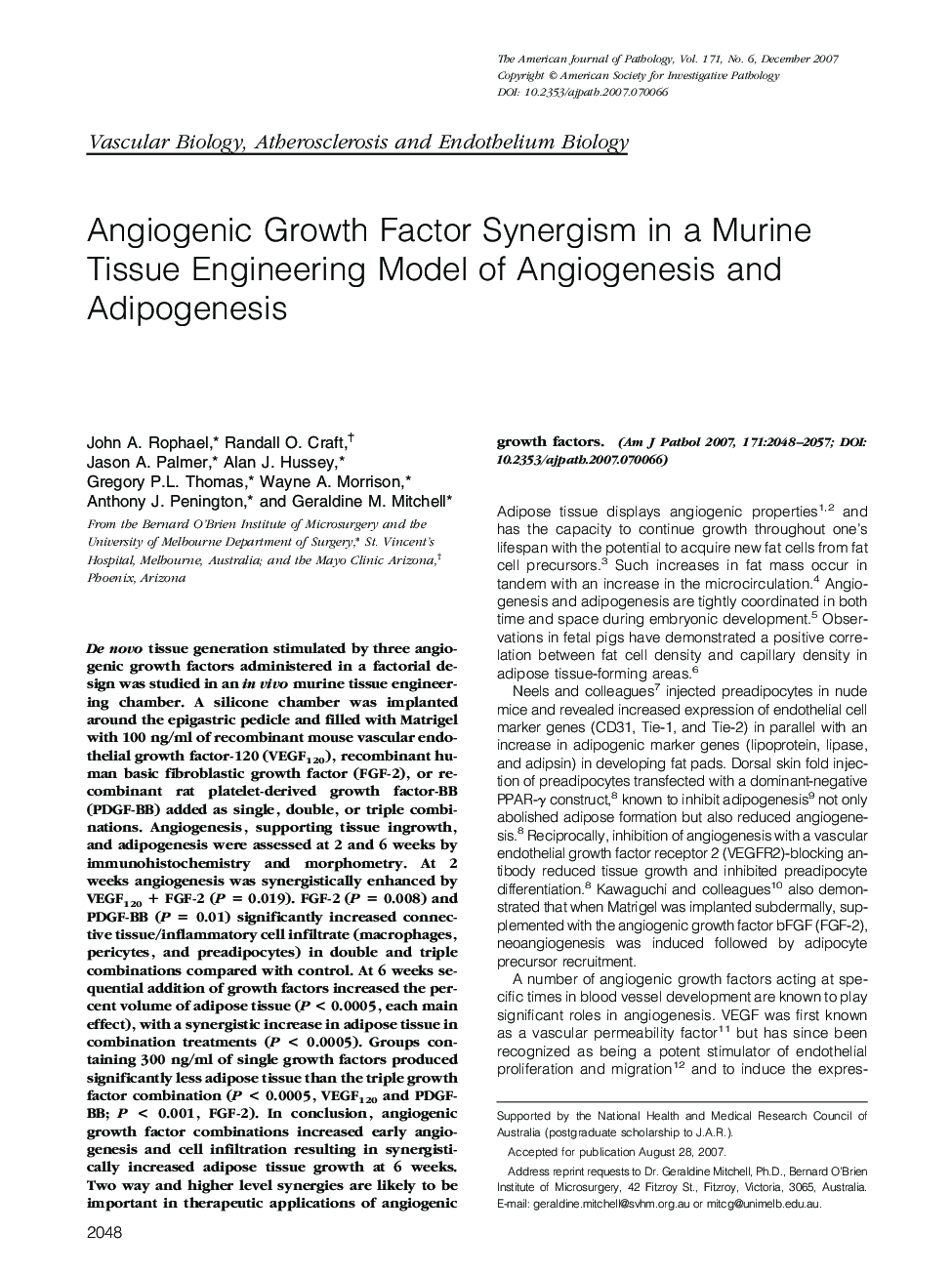| Article ID | Journal | Published Year | Pages | File Type |
|---|---|---|---|---|
| 2866026 | The American Journal of Pathology | 2007 | 10 Pages |
De novo tissue generation stimulated by three angiogenic growth factors administered in a factorial design was studied in an in vivo murine tissue engineering chamber. A silicone chamber was implanted around the epigastric pedicle and filled with Matrigel with 100 ng/ml of recombinant mouse vascular endothelial growth factor-120 (VEGF120), recombinant human basic fibroblastic growth factor (FGF-2), or recombinant rat platelet-derived growth factor-BB (PDGF-BB) added as single, double, or triple combinations. Angiogenesis, supporting tissue ingrowth, and adipogenesis were assessed at 2 and 6 weeks by immunohistochemistry and morphometry. At 2 weeks angiogenesis was synergistically enhanced by VEGF120 + FGF-2 (P = 0.019). FGF-2 (P = 0.008) and PDGF-BB (P = 0.01) significantly increased connective tissue/inflammatory cell infiltrate (macrophages, pericytes, and preadipocytes) in double and triple combinations compared with control. At 6 weeks sequential addition of growth factors increased the percent volume of adipose tissue (P < 0.0005, each main effect), with a synergistic increase in adipose tissue in combination treatments (P < 0.0005). Groups containing 300 ng/ml of single growth factors produced significantly less adipose tissue than the triple growth factor combination (P < 0.0005, VEGF120 and PDGF-BB; P < 0.001, FGF-2). In conclusion, angiogenic growth factor combinations increased early angiogenesis and cell infiltration resulting in synergistically increased adipose tissue growth at 6 weeks. Two way and higher level synergies are likely to be important in therapeutic applications of angiogenic growth factors.
